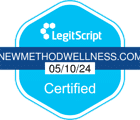Origin of the Disease Model of Addiction
The term “Disease Model of Addiction” was coined more than 50 years after the American Medical Association (AMA) first deemed alcoholism as an illness in 1956. No longer considered as just a behavioral problem, addiction is now defined as “a primary, chronic disease of the brain reward, motivation, memory and related circuitry. Dysfunction in these circuits leads to characteristic biological, psychological, social and spiritual manifestations,” according to the American Society of Addiction Medicine (ASAM).
Addiction has long been stigmatized as an indication of weak moral character but treating it as a disease means giving the appropriate medical attention to someone with chemical dependency, just as if the patient would receive treatment for cancer, heart disease, or some other medical condition. Addiction is a disease of the brain that, left untreated, will result in dysfunction or death.
Stages of Addiction
The concept of addiction as a brain disease is strongly supported by the National Institute on Drug Abuse (NIDA) and the National Institute on Alcohol Abuse and Alcoholism (NIAAA). Addiction is not always immediate in every case. Depending on the potency of the drug, addiction can start instantly, or it can develop in stages from the first use to misuse, abuse, dependency and addiction.
First Use
A combination of risk factors such as mental illness, stress or peer pressure can lead an individual to his or her first exposure to a drug. The feeling derived from the initial use will influence the user to try again or to stop altogether. If the user enjoys the “high,” he or she will be motivated to continue using the same drug and/or experiment with other drugs.
Experimentation
Continued use may involve experimentation with binge drinking and intoxication, such as getting drunk at a party every now and then. Individuals are still in control of their usage, and they are not yet dependent on the drug or alcohol, nor do they experience any cravings.
Tolerance
Regular use leads to tolerance, when the user’s body requires increasing dosages of the same drug to get the initial reward or “high.” By this point, the user has already established a pattern of substance use, such as drinking on the weekends or associating drug use with stress relief or emotional escape.
Misuse/Risky Use
The pattern of substance use begins to take a toll on the user’s life. Drunk driving, missing days of work, and getting arrested for driving under the influence are problematic signs of risky use/misuse of drugs and alcohol.
Dependence/Abuse
The user experiences physical and/or psychological dependence on the drug. Abstaining from use of the drug elicits physiological withdrawal symptoms or psychological cravings, so the user continues to misuse or abuse the drug to avoid physiological consequences.
Why Will Power Is Not Enough
No one aspires to be a drug addict when they grow up, so how is it possible that the number of substance use disorders continues to skyrocket over the last 20 years? Research shows that individuals with mental illness such as depression, anxiety, bipolar disorder or ADHD are much more likely to develop substance abuse addiction. The National Institutes of Health (NIH) defines mental illness as “a health condition that changes a person’s thinking, feelings, or behavior (or all three) and that causes the person distress and difficulty in functioning.” The degree of mental illness varies from one person to another.
The ability to abstain from harmful substances or destructive behaviors is already compromised by mental illness. Coupled with drug and alcohol use, the user’s biological makeup plays a role in how quickly an addiction develops. Studies reveal that addictions are largely influenced by genetic backgrounds as well as lifestyle choices. When people reach a certain point in their usage, the switch from controlled use to compulsive misuse indicates that the brain has already been damaged by substance use, and recovery will require research-based interventions such as psychoneuroplasticity.
How Drugs Damage the Brain
Neurons are nerve cells that communicate with each other via neurotransmitters, which are “messengers” that contain signals such as pain, pleasure and other sensory information. When alcohol and drugs enter the human body, they start to interfere with communication between neurons because their chemical structures closely resemble the structure of natural neurotransmitters. Once a foreign substance activates the brain’s reward system, the “pleasure circuit,” the individual experiences a “high” which motivates the user to return to alcohol or their drug of choice again. Certain substances such as heroin and fentanyl are so highly addictive that the user can get hooked from just one use.
Drugs and alcohol change the neural pathways within the brain as increasingly euphoric effects reinforce the behavior. When stimulated, the brain’s reward system pumps more and more dopamine, the neurotransmitter responsible for emotion, motivation, pleasure and movement. This creates new pathways due to an abnormal amount of pleasure-producing chemicals sent throughout the brain and body. The disruption of natural communication between neurons is eventually destroyed, at which point the brain must be “rewired” by addiction professionals to be recalibrated.
The Role of Responsibility in Addiction
Some critics may argue, “If addiction results from repetitive voluntary behaviors, how can it be the result of a disease process?” And if addiction is strictly a brain disorder, why is spirituality included as part of the treatment process? Treating addiction as a brain disease seems to imply that users are excused for their criminal behavior without having to “pay for personal irresponsible decisions.”
Addiction is an incredibly complex disease that cannot be attributed to one cause. As the American Society of Addiction Medicine defines it, addiction is manifested in biological, psychological, social and spiritual dysfunction. Since addiction is not strictly neurobiological, addiction professionals can help patients harness their will power to assume responsibility and therefore regain control over their lives. Addiction is a brain disease, but the spiritual, emotional and mental elements of a person can still influence the individual to seek treatment if the motivation is strong enough. Oftentimes, because the user’s willpower is diminished, family members and friends will seek help from addiction professionals to help their loved ones achieve a motivational breakthrough.
For more information about Psychoneuroplasticity, call 866.951.1824
To see why Dr. Phil recommends New Method Wellness, click here!







